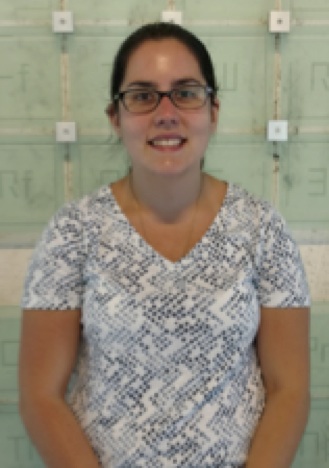Org. Synth. 2016, 93, 306-318
DOI: 10.15227/orgsyn.093.0306
Nickel-Catalyzed Suzuki-Miyaura Coupling in t-Amyl Alcohol for the Preparation of 5-(Furan-3-yl)pyrimidine
Submitted by Liana Hie and Neil K. Garg
*1
Checked by Kristen Flynn, Alyssa Antropow, and Mohammad Movassaghi
1. Procedure
5-(Furan-3-yl)pyrimidine. A 1000-mL round-bottomed flask is charged with a Teflon-coated, octagon-shaped magnetic stir bar (4.0 x 0.5 cm) and
K3PO4 (60.0 g, 283 mmol, 4.50 equiv), and then attached to a gas inlet adapter (90°). The flask and its contents are flame-dried (
Note 1) under oil pump vacuum (1.0 mmHg) for ca. 5 min (
Note 2). After cooling to 23 °C under nitrogen, the gas inlet adapter is removed and the flask is charged with
5-bromopyrimidine (10.0 g, 63.0 mmol, 1 equiv),
3-furanylboronic acid (17.6 g, 158 mmol, 2.50 equiv), and
NiCl2(PCy3)2 (0.220 g, 0.315 mmol, 0.500 mol%) (
Note 3). The flask is equipped with a 24/40 oven-dried reflux condenser and a septum with a needle, and then evacuated and backfilled with nitrogen (3x).
tert-Amyl alcohol (210 mL, 0.3 M) is added via cannula from an oven-dried, argon purged graduated cylinder through the septum under a flow of argon. The resulting reddish heterogeneous mixture is stirred at 23 °C for 1 h under positive nitrogen pressure (Figure 1) (
Note 4).
Figure 1. Reddish heterogeneous mixture formed after mixing the reagents (Photo provided by Submitters)
The reaction vessel containing a brown heterogeneous mixture and equipped with a reflux condenser is placed into a pre-heated oil bath set at a temperature of 120 °C (Figure 2) (
Note 5).
Figure 2. Brown heterogeneous mixture resulted after stirring at 120 °C for 1 h (Photo provided by Submitters)
After stirring for 1 h, the reaction vessel containing a brown greenish heterogeneous mixture is removed from the oil bath and cooled to 23 °C. Thin layer chromatography is performed to check the progress of the reaction (hexanes:EtOAC = 3:1, R
f = 0.31) (Figure 3). Into the flask is added deionized
water (100 mL) and
Et2O (200 mL), and the resulting mixture is stirred for 15 min (Figure 4).
Figure 3. Thin layer chromatography of the crude reaction mixture (left lane = 5-bromopyrimidine, middle lane = cross spots of 5-bromopyrimidine and the reaction mixture, right lane = reaction mixture) (Photo provided by Submitters)
Figure 4. Brown homogenous mixture was formed upon stirring with water and diethyl ether (Photo provided by Submitters)
The combined mixture is then poured into a 1000-mL separatory funnel. The reaction flask is rinsed once with
H2O (100 mL) and
Et2O (100 mL), and both washes are transferred to the separatory funnel (Figure 5a). The organic and aqueous layers are separated. The organic layer is washed sequentially with 1.0 M
NaOH (2 x 200 mL) (Figure 5b) and saturated
sodium chloride solution (200 mL) (Figure 5c).
Figure 5. (a) The reaction mixture with water and diethyl ether in a separatory funnel. (b) The organic layer and 1.0 M NaOH. (c) The organic layer and saturated sodium chloride (Photo provided by Submitters)
The organic layer is then dried over
Na2SO4 (100 g) for 15 min and filtered over a 150-mL glass-fritted filter packed with celite (30 g). The drying agent is rinsed with
Et2O (100 mL) and the combined organics are concentrated by rotary evaporation (275 mmHg, 30 °C to remove
Et2O and 30 mmHg, 50 °C to remove
tert-amyl alcohol, The temperature was controlled by a water bath). In a 500-mL round-bottomed flask fitted with a 24/40 reflux condenser, the tan solid is dissolved in 200 mL of hexanes, which is brought to 80 °C by heating in an oil bath (Notes
6 and
7). Upon complete dissolution, the filtrate is allowed to cool to room temperature and then cooled at -20 °C for 12 h. The light tan crystals that form are collected by filtration on a 150 mL fritted funnel and washed with 100 mL of ice-cold hexane (0 °C). The resulting crystals are transferred to a 100 mL round-bottomed flask and then dried under oil pump vacuum (1.0 mmHg, 23 °C) for 8 h. The mother liquor is concentrated and a second recrystallization is performed to afford additional
5-(furan-3-yl)pyrimidine (total yield of both crops is 7.60 g, 83% yield)
as a light tan crystalline solid (Notes
8 and
9).
Figure 6. Product collected as light tan crystalline solid (Photo provided by Submitters)
2. Notes
1. Heat resistant gloves should be worn to prevent burns.
2. Submitters observed bubbling upon flame-drying likely due to water content. Checkers used anhydrous base and did not observe bubbling.
3.
Potassium phosphate tribasic (anhydrous) was purchased from Alfa-Aesar.
5-Bromopyrimidine (98%) and
3-furanylboronic acid (96%) were purchased from Combi-Blocks, Inc. and used as received.
Bis(tricyclohexylphosphine)nickel(II) chloride (97%) and
tert-amyl alcohol (ReagentPlus, 99%)
were purchased from Sigma-Aldrich and used as received.
4. The reaction mixture was stirred at 900 rpm.
5. Temperature was monitored by a thermocouple placed directly in the oil bath.
6. Submitters recommend an extra quantity of
EtOAc can be added to aid dissolution, if necessary. Checkers did not use any
EtOAc during recrystallizations.
7. Hot filtration using a 150 mL fritted funnel can be performed to remove any brown residue, if needed. Checkers performed recrystallization with and without hot filtration, and no difference in purity was observed. Procedure for hot filtration: Glassware had been heated in the oven at 200 °C for ca. 30 min and was used within five min of removal from the oven. The hot hexanes solution (80 °C) is filtered through a glass-fritted funnel into an Erlenmeyer flask. If room-temperature glassware is used for this procedure, the product precipitates.
8. A second run was performed at half scale, which provided 3.75 g (82%) of the product.
9. This compound exhibits the following physiochemical properties: mp = 80-81 °C; TLC (hexanes:EtOAc = 3:1), R
f = 0.31;
1H NMR
pdf(400 MHz, CDCl
3) δ: 6.73 (dd,
J = 1.9, 0.9 Hz, 1H), 7.57 (t,
J = 1.7 Hz, 1H), 7.84 (dd,
J = 1.5, 0.9 Hz, 1H), 8.85 (s, 2H), 9.12 (s, 1H);
13C NMR
pdf(125 MHz, CDCl
3) δ: 108.1, 120.0, 126.7, 139.5, 144.7, 153.7, 157.2; IR (film): 3136, 3112, 3041, 1969, 1957, 1880, 1607, 1575, 1549, 1513, 1438, 1414, 1340, 1187, 1159, 1091, 1061, 1012, 924, 871, 790, 732, 721, 645, 634; HRMS-ESI (
m/z) cacld for C
8H
7N
2O [M+H]
+: 147.0553, found: 147.0547; Anal. Calcd for C
8H
6N
2O: C 65.75, H 4.14, N 19.17, found: C 65.65, H 4.25, N 19.01.
Working with Hazardous Chemicals
The procedures in
Organic Syntheses are intended for use only by persons with proper training in experimental organic chemistry. All hazardous materials should be handled using the standard procedures for work with chemicals described in references such as "Prudent Practices in the Laboratory" (The National Academies Press, Washington, D.C., 2011; the full text can be accessed free of charge at
http://www.nap.edu/catalog.php?record_id=12654). All chemical waste should be disposed of in accordance with local regulations. For general guidelines for the management of chemical waste, see Chapter 8 of Prudent Practices.
In some articles in Organic Syntheses, chemical-specific hazards are highlighted in red "Caution Notes" within a procedure. It is important to recognize that the absence of a caution note does not imply that no significant hazards are associated with the chemicals involved in that procedure. Prior to performing a reaction, a thorough risk assessment should be carried out that includes a review of the potential hazards associated with each chemical and experimental operation on the scale that is planned for the procedure. Guidelines for carrying out a risk assessment and for analyzing the hazards associated with chemicals can be found in Chapter 4 of Prudent Practices.
The procedures described in Organic Syntheses are provided as published and are conducted at one's own risk. Organic Syntheses, Inc., its Editors, and its Board of Directors do not warrant or guarantee the safety of individuals using these procedures and hereby disclaim any liability for any injuries or damages claimed to have resulted from or related in any way to the procedures herein.
3. Discussion
Transition metal-catalyzed cross-couplings are versatile methods for carbon-carbon (C-C) and carbon-heteroatom bond formation.
2 Traditionally, palladium catalysts have been most commonly utilized for this type of transformation; however, there has been a significant interest in the development of cross-coupling reactions that rely on non-precious metal catalysts. In particular,
nickel has emerged as an alternative to palladium due to several factors. For example,
nickel is significantly more abundant, much less expensive, and also possesses a much lower CO
2 footprint.
3 Moreover,
nickel catalysts possess the unique ability to activate a wide range of electrophilic coupling partners, well beyond the scope of traditional cross-couplings that use palladium catalysis.
3
Our research groups and many others have developed new protocols for aryl C-C and C-X bond formations using
nickel catalysts.
4,5,6,7 In our efforts to render our methodologies more industrially friendly, we have developed the
nickel-catalyzed Suzuki-Miyaura coupling in 'green' solvents,
8,9 such as
2-Me-THF and
tert-amyl alcohol.
10 The methodology proceeds under mild conditions and has a broad scope with respect to the boronic acids, the electrophiles (halides and phenolic derivatives), and heterocycle constituents.
4a
A variety of heterocyclic halides (i.e., chlorides, bromides, iodides) and phenol-derived electrophiles (i.e., carbamates, sulfamates, mesylates, and pivalates) were coupled with aryl boronic acids to give coupled products (
1-
7, Table 1). These results also demonstrate that heterocycles such as pyridine, pyrimidine, pyrazole, quinolone, isoquinoline, and carbazole are tolerated under these coupling conditions.
Table 1. Coupling of heterocyclic substrates with aryl boronic acids.a,b
a Conditions: NiCl2(PCy3)2 complex (5 mol %), halide substrate (1.00 equiv), aryl boronic acid (2.50 equiv), K3PO4 (4.50 equiv), hexamethylbenzene (0.10 equiv), 100 or 120 °C, 12 h. b Yield of product determined by 1H NMR analysis of the crude reaction mixtures using hexamethylbenzene as an internal standard. c Conditions: NiCl2(PCy3)2 complex (10 mol %), halide substrate (1.00 equiv), aryl boronic acid (4.00 equiv), K3PO4 (7.20 equiv), hexamethylbenzene (0.10 equiv), 100 or 120 °C, 12 h.
The methodology could also be applied to access bis(heterocyclic) frameworks, which are prevalent motifs in numerous bioactive molecules, but are sometimes difficult to access via palladium-catalyzed methods.
11 Pyridine- and pyrimidine-containing substrates were coupled with heterocyclic boronic acids to give bis(heterocycles)
8 and
9 in good to excellent yields with 1 mol% of the Ni precatalyst (Table 2). Isoquinoline- and dihydrobenzofuran-containing substrates were coupled with heterocyclic boronic acids to forge bis(heterocycles)
10 and
11 in excellent yields using 5 mol% Ni precatalyst. It should be noted that the couplings shown in Tables 1 and 2 could be achieved in the presence of
2-Me-THF or
tert-amyl alcohol as the reaction medium.
Table 2. Couplings of heterocyclic boronic acids with heterocyclic substrates. a,b
a Conditions: NiCl2(PCy3)2 complex (1 mol %), halide substrate (1.00 equiv), aryl boronic acid (2.50 equiv), K3PO4 (4.50 equiv), hexamethylbenzene (0.10 equiv), 100 or 120 °C, 12 h. b Yield of product determined by1H NMR analysis of the crude reaction mixtures using hexamethylbenzene as an internal standard. c Conditions: NiCl2(PCy3)2 complex (5 mol %), halide substrate (1.00 equiv), aryl boronic acid (4.00 equiv), K3PO4 (7.20 equiv), hexamethylbenzene (0.10 equiv), 100 or 120 °C, 12 h.d Conditions: NiCl2(PCy3)2 complex (10 mol %), halide substrate (1.00 equiv), aryl boronic acid (4.00 equiv), K3PO4 (7.20 equiv), hexamethylbenzene (0.10 equiv), 100 or 120 °C, 12 h.
Appendix
Chemical Abstracts Nomenclature (Registry Number)
5-Bromopyrimidine; (4595-59-9)
3-Furanylboronic acid; (55552-70-0)
Potassium phosphate tribasic; (7778-53-2)
Bis(tricyclohexylphosphine)nickel(II) chloride; (19999-87-2)
tert-Amyl alcohol; (75-85-4)

|
Liana Hie was born and raised in Jakarta, Indonesia. She received her B. S. in chemistry from the University of California, Davis (UCD) in 2011. At UCD, she performed research in the laboratory of Prof. Xi Chen. She began her doctoral studies at the University of California, Los Angeles in 2011 under the supervision of Prof. Neil K. Garg. Her research focuses on the development of nickel-catalyzed cross-coupling reactions. |

|
Neil Garg is a Professor of Chemistry at the University of California, Los Angeles. His laboratory develops novel synthetic strategies and methodologies to enable the total synthesis of complex bioactive molecules. |

|
Kristen Flynn was born and raised in New Jersey. She obtained her B.S. in chemistry from Monmouth University in 2016. During her time there, she performed research under the guidance of Prof. Massimiliano Lamberto. She has a research appointment in the Movassaghi group at MIT and will begin her Ph.D. studies at in the fall. |

|
Alyssa Antropow completed her B.S./M.S. in chemistry at Stevens Institute of Technology in 2013. As an undergraduate, she conducted research in the laboratory of Prof. A.K. Ganguly. In 2013, Alyssa began her graduate studies at MIT and joined the laboratory of Prof. Mohammad Movassaghi. Her research is focused on the total synthesis of alkaloid natural products. |
Copyright © 1921-, Organic Syntheses, Inc. All Rights Reserved